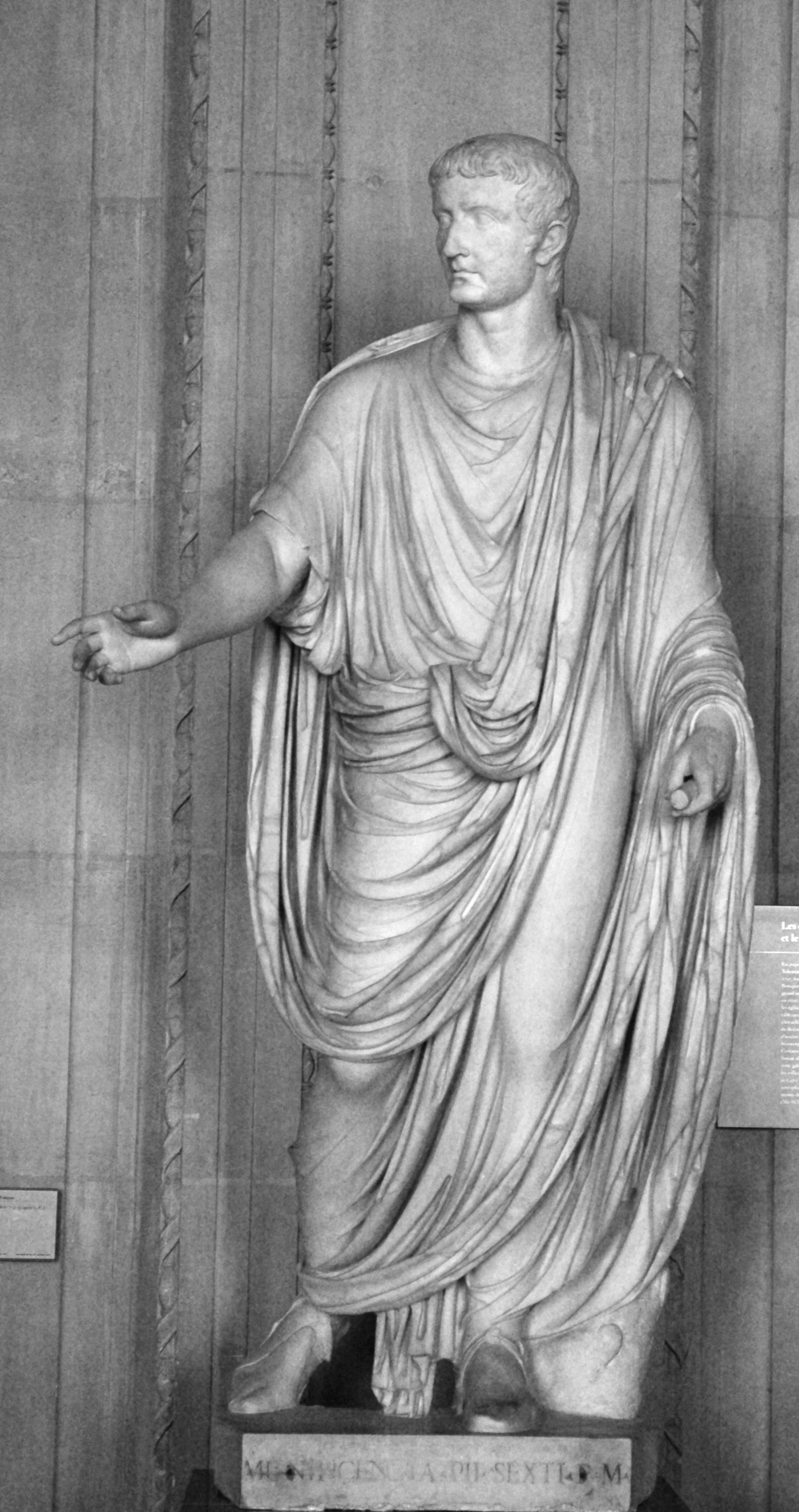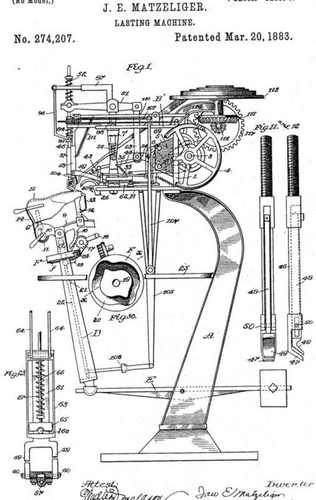|
Last (other)
A last is a mechanical form shaped like a human foot. It is used by Shoemaking, shoemakers and cordwainers in the manufacture and repair of shoes. Lasts come in many styles and sizes, depending on the exact job they are designed for. Common variations include simple one-size lasts used for repairing sole (shoe), soles and heel (shoe), heels, custom-purpose mechanized lasts used in modern mass production, and custom-made lasts used in the making of bespoke footwear. Lasts are made of firm materialshardwoods, cast iron, and high-density plasticsto withstand contact with wetted leather and the strong forces involved in reshaping it. Since the early 19th century, lasts typically come in pairs to match the separate shapes of the right and left feet. The development of an automated lasting machine by the Surinamese-American Jan Ernst Matzeliger in the 1880s was a major development in shoe production, immediately improving quality, halving prices, and eliminating the previous putting-ou ... [...More Info...] [...Related Items...] OR: [Wikipedia] [Google] [Baidu] |
Proto-Germanic
Proto-Germanic (abbreviated PGmc; also called Common Germanic) is the reconstructed proto-language of the Germanic branch of the Indo-European languages. Proto-Germanic eventually developed from pre-Proto-Germanic into three Germanic branches during the fifth century BC to fifth century AD: West Germanic, East Germanic and North Germanic, which however remained in contact over a considerable time, especially the Ingvaeonic languages (including English), which arose from West Germanic dialects and remained in continued contact with North Germanic. A defining feature of Proto-Germanic is the completion of the process described by Grimm's law, a set of sound changes that occurred between its status as a dialect of Proto-Indo-European and its gradual divergence into a separate language. As it is probable that the development of this sound shift spanned a considerable time (several centuries), Proto-Germanic cannot adequately be reconstructed as a simple node in a tree model but ... [...More Info...] [...Related Items...] OR: [Wikipedia] [Google] [Baidu] |
High Middle Ages
The High Middle Ages, or High Medieval Period, was the periodization, period of European history that lasted from AD 1000 to 1300. The High Middle Ages were preceded by the Early Middle Ages and were followed by the Late Middle Ages, which ended around AD 1500 (by historiography, historiographical convention). Key historical trends of the High Middle Ages include the medieval demography, rapidly increasing population of Europe, which brought about great social and political change from the preceding era, and the Renaissance of the 12th century, including the first developments of rural exodus and urbanization. By 1250, the robust population increase had greatly benefited the European economy, which reached levels that would not be seen again in some areas until the 19th century. That trend faltered during the Late Middle Ages because of a Crisis of the Late Middle Ages, series of calamities, most notably the Black Death, but also numerous wars as well as economic stagnation. Fro ... [...More Info...] [...Related Items...] OR: [Wikipedia] [Google] [Baidu] |
Late Antiquity
Late antiquity is the time of transition from classical antiquity to the Middle Ages, generally spanning the 3rd–7th century in Europe and adjacent areas bordering the Mediterranean Basin. The popularization of this periodization in English has generally been credited to historian Peter Brown, after the publication of his seminal work '' The World of Late Antiquity'' (1971). Precise boundaries for the period are a continuing matter of debate, but Brown proposes a period between the 3rd and 8th centuries AD. Generally, it can be thought of as from the end of the Roman Empire's Crisis of the Third Century (235–284) to the early Muslim conquests (622–750), or as roughly contemporary with the Sasanian Empire (224–651). In the West its end was earlier, with the start of the Early Middle Ages typically placed in the 6th century, or earlier on the edges of the Western Roman Empire. The Roman Empire underwent considerable social, cultural and organizational changes starting wit ... [...More Info...] [...Related Items...] OR: [Wikipedia] [Google] [Baidu] |
Barbarian Invasions
The Migration Period was a period in European history marked by large-scale migrations that saw the fall of the Western Roman Empire and subsequent settlement of its former territories by various tribes, and the establishment of the post-Roman kingdoms. The term refers to the important role played by the migration, invasion, and settlement of various tribes, notably the Franks, Goths, Alemanni, Alans, Huns, early Slavs, Pannonian Avars, Magyars, and Bulgars within or into the former Western Empire and Eastern Europe. The period is traditionally taken to have begun in AD 375 (possibly as early as 300) and ended in 568. Various factors contributed to this phenomenon of migration and invasion, and their role and significance are still widely discussed. Historians differ as to the dates for the beginning and ending of the Migration Period. The beginning of the period is widely regarded as the invasion of Europe by the Huns from Asia in about 375 and the ending with the conque ... [...More Info...] [...Related Items...] OR: [Wikipedia] [Google] [Baidu] |
Shoemaking
Shoemaking is the process of making footwear. Originally, shoes were made one at a time by hand, often by groups of shoemakers, or cobblers (also known as '' cordwainers''). In the 18th century, dozens or even hundreds of masters, journeymen and apprentices (both men and women) would work together in a shop, dividing up the work into individual tasks. A customer could come into a shop, be individually measured, and return to pick up their new shoes in as little as a day. Everyone needed shoes, and the median price for a pair was about one day’s wages for an average journeyman. The shoemaking trade flourished in the eighteenth and early nineteenth centuries but began to be affected by industrialization in the later nineteenth century. Traditional handicraft shoemaking has now been largely superseded in volume of shoes produced by industrial mass production of footwear, but not necessarily in quality, attention to detail, or craftsmanship. Today, most shoes are made on a volum ... [...More Info...] [...Related Items...] OR: [Wikipedia] [Google] [Baidu] |
Bespoke Shoe
Bespoke shoes or custom shoes are shoes made especially for a certain customer by a shoemaker. The feet are measured and a last for each foot is created. At the fitting, the customer tries the prototype pair of shoes made in an inexpensive leather and the shoemaker checks if anything needs to be changed. If so, the changes are applied to the lasts and the shoes are created with a precious leather. After the final lasts are created, the customer can order more pairs of shoes without more measurements and fittings. Producers Producers of bespoke shoes may include: *Antonio Meccariello * Berluti * Bontoni * Corthay * Edward Green * Ferrante 1875 *George Cleverly * Gaziano & Girling *Hiro Yanagimachi *John Lobb * James Taylor & Son *Masaru Okuyama * Meticulous Men *Milly J Shoes *Noriyuki Misawa *Riccardo Bestetti * Santoni *Stefano Bemer *Vass Shoes *Veritas Bespoke * Yohei Fukuda * Jan P. Myhre See also *Bespoke *Bespoke tailoring Bespoke tailoring or custom tailoring is clo ... [...More Info...] [...Related Items...] OR: [Wikipedia] [Google] [Baidu] |
Ancient Roman Clothing
Clothing in ancient Rome generally comprised a short-sleeved or sleeveless, knee-length tunic for men and boys, and a longer, usually sleeved tunic for women and girls. On formal occasions, adult male citizens could wear a woolen toga, draped over their tunic, and married citizen women wore a woolen mantle, known as a palla, over a stola, a simple, long-sleeved, voluminous garment that hung to midstep. Clothing, footwear and accoutrements identified gender, status, rank and social class. This was especially apparent in the distinctive, privileged official dress of magistrates, priesthoods and the military. The toga was considered Rome's "national costume," privileged to Roman citizens but for day-to-day activities most Romans preferred more casual, practical and comfortable clothing; the tunic, in various forms, was the basic garment for all classes, both sexes and most occupations. It was usually made of linen, and was augmented as necessary with underwear, or with vario ... [...More Info...] [...Related Items...] OR: [Wikipedia] [Google] [Baidu] |
Jan Ernst Matzeliger
Jan Ernst Matzeliger (September 15, 1852 – August 24, 1889) was an inventor whose lasting machine brought significant change to the manufacturing of shoes. Biography Matzeliger was born in Dutch Guiana, now Suriname. His father, Ernst Matzeliger, was a third generation Dutchman of German descent living in the Dutch Guiana capital city of Paramaribo. He owned and operated the Colonial Shipworks that had been in his family for three generations. His mother was a house slave of African descent; she lived on the plantation of which his father was the owner for a time. At the age of ten, Jan Matzeliger was apprenticed in the Colonial Ship Works in Paramaribo, where he demonstrated a natural aptitude for machinery and mechanics. He left Dutch Guiana at age 19, and worked as a mechanic on a Dutch East Indies merchant ship for several years before settling in Philadelphia, Pennsylvania, where he first learned the shoe trade. By 1877, he spoke adequate English (Dutch was his native ... [...More Info...] [...Related Items...] OR: [Wikipedia] [Google] [Baidu] |
German Language
German ( ) is a West Germanic languages, West Germanic language mainly spoken in Central Europe. It is the most widely spoken and Official language, official or co-official language in Germany, Austria, Switzerland, Liechtenstein, and the Italy, Italian province of South Tyrol. It is also a co-official language of Luxembourg and German-speaking Community of Belgium, Belgium, as well as a national language in Namibia. Outside Germany, it is also spoken by German communities in France (Bas-Rhin), Czech Republic (North Bohemia), Poland (Upper Silesia), Slovakia (Bratislava Region), and Hungary (Sopron). German is most similar to other languages within the West Germanic language branch, including Afrikaans, Dutch language, Dutch, English language, English, the Frisian languages, Low German, Luxembourgish, Scots language, Scots, and Yiddish. It also contains close similarities in vocabulary to some languages in the North Germanic languages, North Germanic group, such as Danish lan ... [...More Info...] [...Related Items...] OR: [Wikipedia] [Google] [Baidu] |
Danish Language
Danish (; , ) is a North Germanic language spoken by about six million people, principally in and around Denmark. Communities of Danish speakers are also found in Greenland, the Faroe Islands, and the northern German region of Southern Schleswig, where it has minority language status. Minor Danish-speaking communities are also found in Norway, Sweden, the United States, Canada, Brazil, and Argentina. Along with the other North Germanic languages, Danish is a descendant of Old Norse, the common language of the Germanic peoples who lived in Scandinavia during the Viking Era. Danish, together with Swedish, derives from the ''East Norse'' dialect group, while the Middle Norwegian language (before the influence of Danish) and Norwegian Bokmål are classified as ''West Norse'' along with Faroese and Icelandic. A more recent classification based on mutual intelligibility separates modern spoken Danish, Norwegian, and Swedish as "mainland (or ''continental'') Scandinavian", while I ... [...More Info...] [...Related Items...] OR: [Wikipedia] [Google] [Baidu] |







